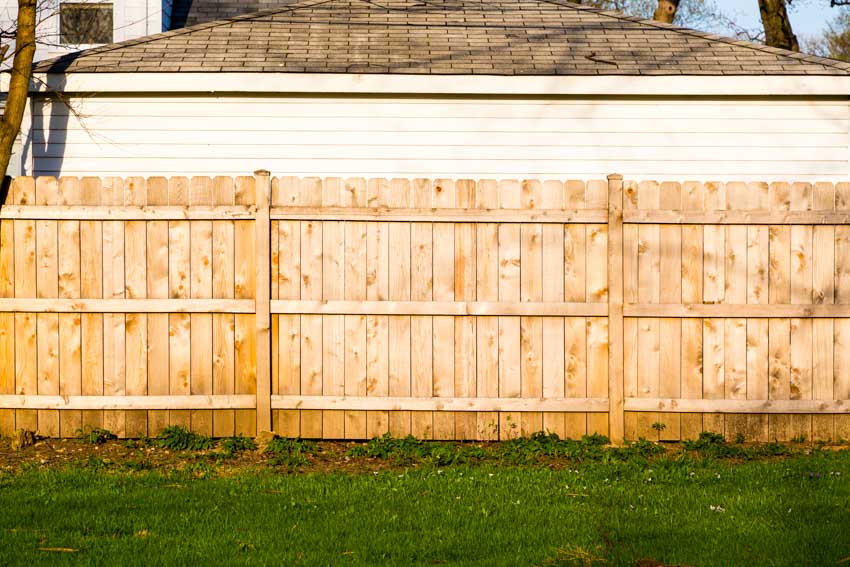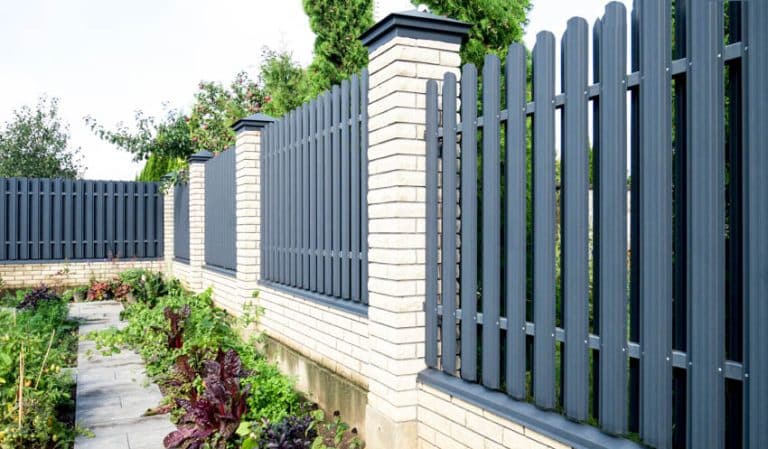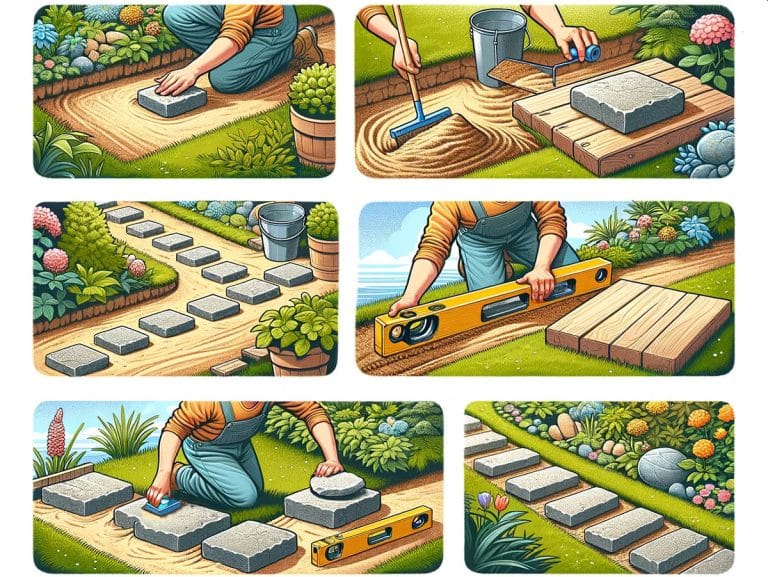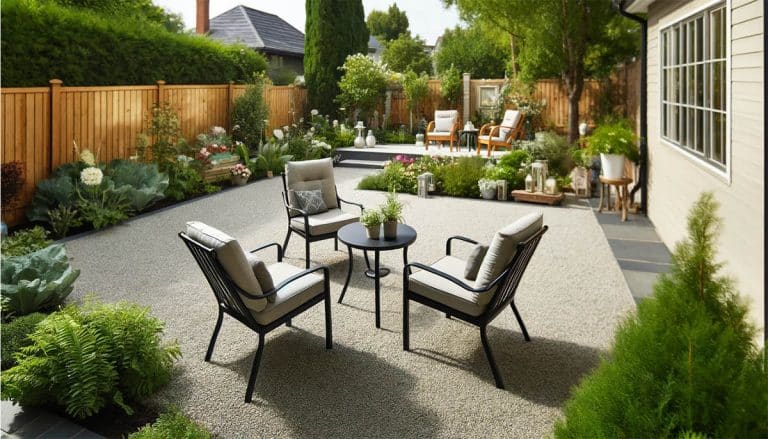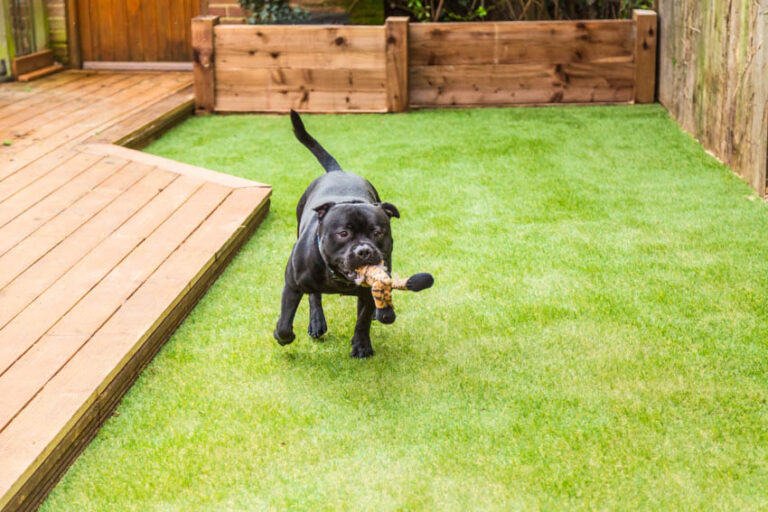Pressure Treated Fence (Designs & Pros and Cons)
In this guide to pressure treated fence designs you’ll see what it is, different styles, pros and cons, durability, and the best pressure treated fence stain options.
 Installing fences can enhance the appeal, personality, and value of your property. Adding a fence can provide easy privacy and a layer of security for kids and pets. However, before making an investment, it is indeed essential to take various factors into account, particularly the type of fencing material you intend to use.
Installing fences can enhance the appeal, personality, and value of your property. Adding a fence can provide easy privacy and a layer of security for kids and pets. However, before making an investment, it is indeed essential to take various factors into account, particularly the type of fencing material you intend to use.
A pressure-treated fence is one of the most recommended fence materials to ensure your fence is long-lasting. In this article, we are going to walk you through all the necessary details you must know to help you decide if a pressure-treated fence is right for you. [toc]
What Is a Pressure Treated Fence?
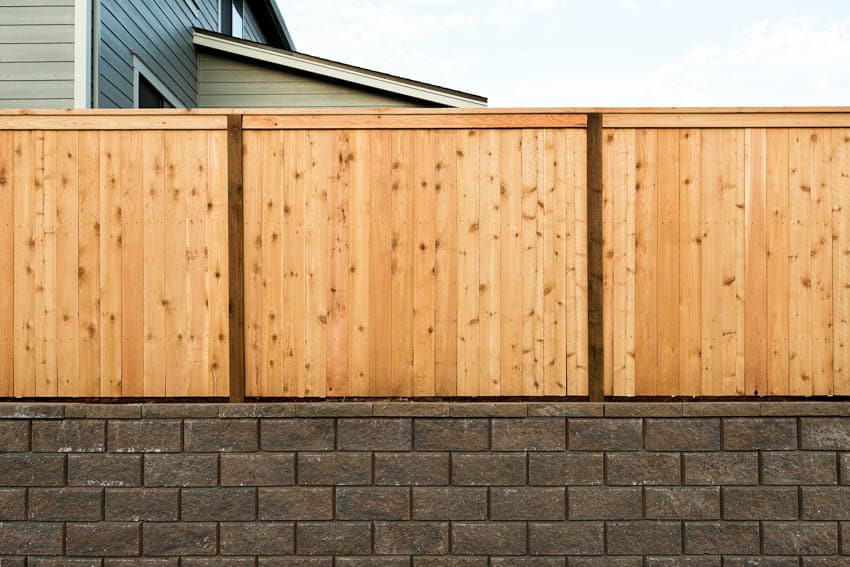
Chemical preservatives are added to make this top sustainable building material last longer, which lowers the amount of maintenance and repair required. Decay, water, and insect damage, such as beetles and termites, can all weaken the condition of wood fencing.
Hence, chemical preservatives help prolong the lifespan of natural wood fences, reducing the amount of maintenance and fixing necessary. The chemical preservatives are driven deep into the core of the wood, not just the external coating, to offer greater protection and to prolong the durability of lumber since untreated timber decays.
This treatment enables lumber to be both sustainable and valuable fencing material. This treatment for wood is not only utilized for fencing but also for a variety of applications, including pressure treated wood decking, landscaping materials, as well as construction materials.
Your property fence will be strong and long-lasting if you invest in pressure-treated fencing. If you use untreated wooden fences, you will find that they become prone to various external factors over time. Pressure-treated fencing is one of the most prevalent and effective fence designs.
Treated Fence Pickets
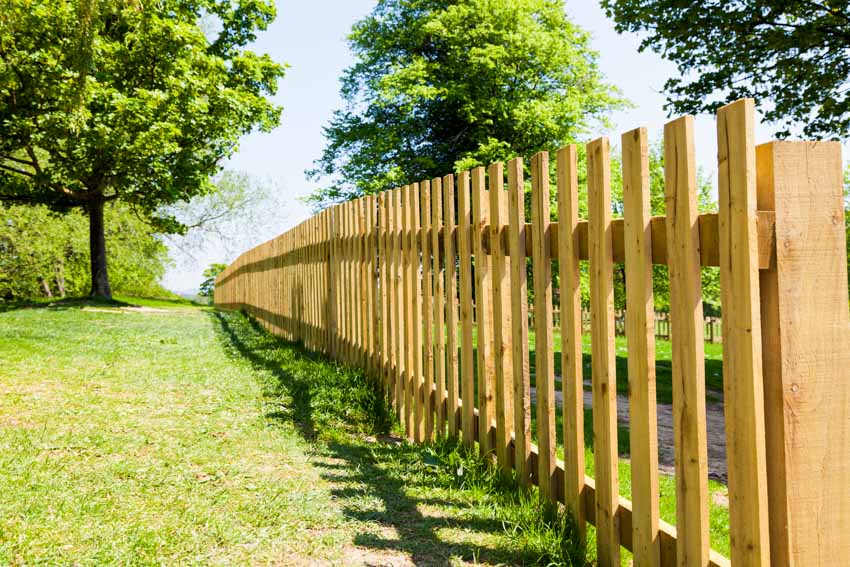
Wood picket fence designs are a popular option, with options ranging from low-cost pressure-treated pine to redwood. They can be painted any color, require re-coating regularly, and are available in a variety of designs.
Nevertheless, the most popular pressure-treated lumber for fencing is pine. This is a cost-effective option that, with appropriate care, can last for many years. The chemicals used in the pressure treatment procedure gradually fade or lose their strength over time.
However, with consistent staining and sealing, you may counteract this loss and re-shield the fence picket. Pressure treatment adds another layer of protection against decay and degeneration. Hence, you have to ensure that your pickets are pressure-treated as well.
Chemically Treated Fence Posts

Although the cost of different types of wood fencing varies, in the case of fence posts, it is often advisable to spend the added cost for pressure-treated fence posts. Truly, the most popular form of fence post material is pressure-treated wood posts, which are utilized for a wide range of purposes. There are numerous advantages to using pressure-treated fence posts.
Fortunately, pressure-treated fence posts are reasonably priced. When compared to other forms of wood, pressure-treated wood is significantly less expensive. Most pressure-treated fence posts are far more durable than other forms of wood fence posts. These pressure-treated fence posts will withstand much more wear and tear and will continue to look attractive over time.
Furthermore, due to the added strength that pressure-treated fence posts offer, they are long-lasting. Some manufacturers even give a 40-year warranty with their pressure-treated wood fence posts.
These fence posts will not attract insects. Insects that strive to bite into it or stay on it for an extended duration will die. Insects will be repelled by the posts rather than attracted to them.
PT Fence Panels
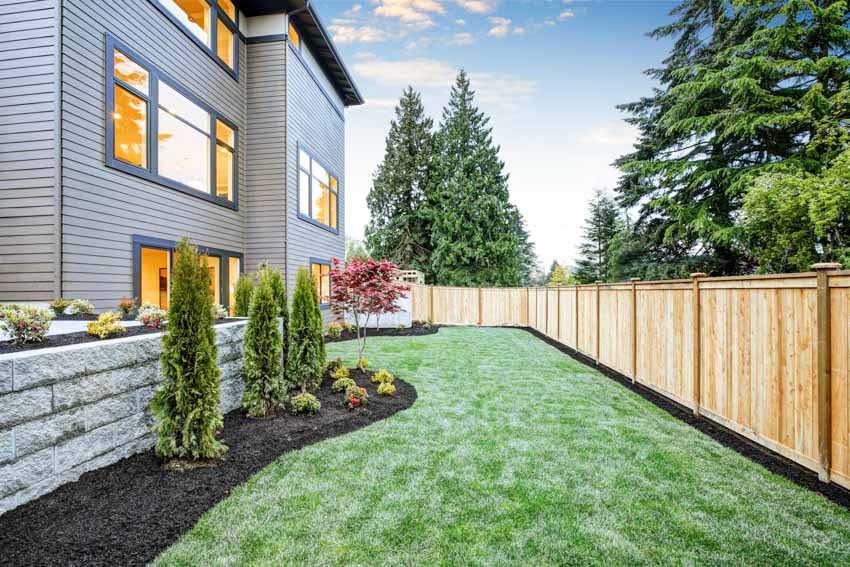
The device then uses mechanical pressure to drive the preservative deep into the wood and totally permeate it. Following that, the vacuum is used to remove any remaining preservatives in the chamber before the backyard fence panels are allowed to dry.
Pressure-treated fence panels are indeed resistant to decay, rot, and termite attack. Because they are pre-treated and do not necessitate regular maintenance, pressure-treated fence panels conserve money and time.
Because the treated fence panels are mold- and weather-resistant, there is no need to remove or update them for several years after installation. For both residential and commercial applications, a wide range of styles and sizes are provided as well.
Wolmanized Fence Pros and Cons

Pros of Green Treated Fences
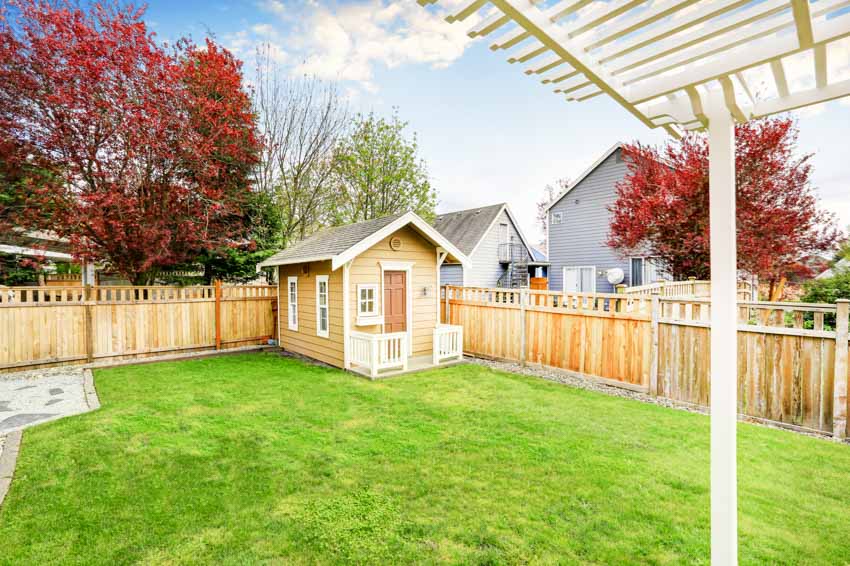
A pressure-treated fence is so tough that it can withstand adverse weather conditions and yet stand tall. This is a commendable characteristic for anyone looking for durable fencing pickets, posts, or panels.
In general, when looking for the best wood for fences, a pressure-treated variant can be considered because it can withstand even the harshest outdoor elements. The main point to remember here is that choosing pressure-treated fences can serve you for decades, and you will not need to replace them anytime soon.
Very Low-Maintenance: Pressure-treated fencing requires less maintenance because it is already strong weather-resistant and long-lasting. You do not need to treat your wood fencing since it is inherently impervious to rotting and can already battle any insect attacks. You can easily construct your pressure-treated fencing and appreciate it already for years or even decades to come.
Moreover, you should be aware that pressure-treated wood is poisonous to insects that try to dig into it for an extended period. That is why it is ideal for fencing posts and panels, as the pressure-treated wood will resist any insects that may try to ruin your fencing. It will not only keep damaging insects at bay, but it will also save you money on repairs and maintenance in the coming years.
Relatively Affordable: Aside from the useful benefit that pressure-treated fencing is long-lasting, you are lucky to know that it is also reasonably priced. Pressure-treated fencing costs far less than other premium fencing materials, making it ideal for homeowners on a tight budget.
Aside from being inexpensive, its treated properties will save you money in the long term because you will not have to pay for any additional wood preservatives.
Naturally Appealing: Pressure-treated fences retain the same appearance as untreated fencing. It will mix in effortlessly with any landscape or home exterior design, giving it a more natural feel and appearance.
The Majority of Pressure-Treated Fences are Fire Resistant: Among the most significant risks to any form of wood is fire destruction. The majority of pressure-treated timbers are fire-resistant and can be employed in outdoor settings where the possibility of fire is increased.
Cons of Fences Made of Green Lumber
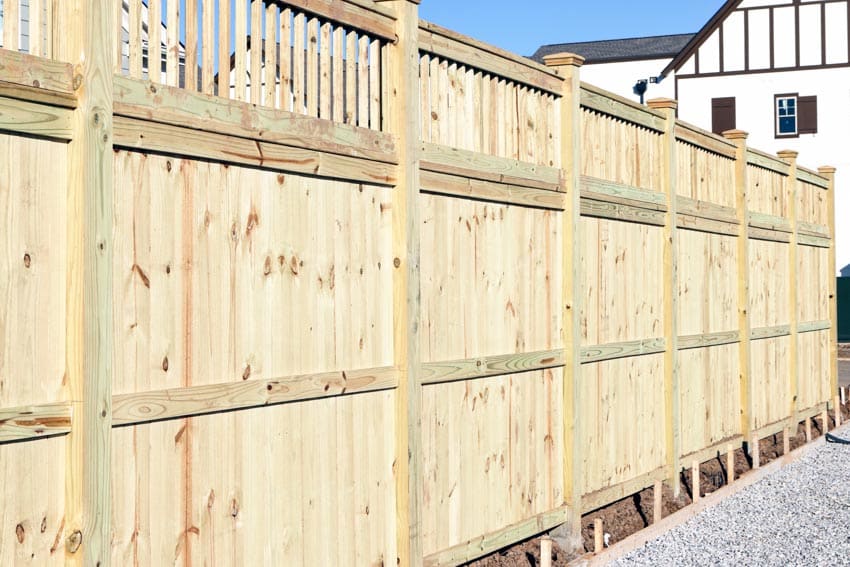
Possibility of Shrinkage and Warping: Pressure-treated wood may take a few months to properly dry, during which time there could be some possibilities of warping and shrinking.
How Long Do PT Fences Last?
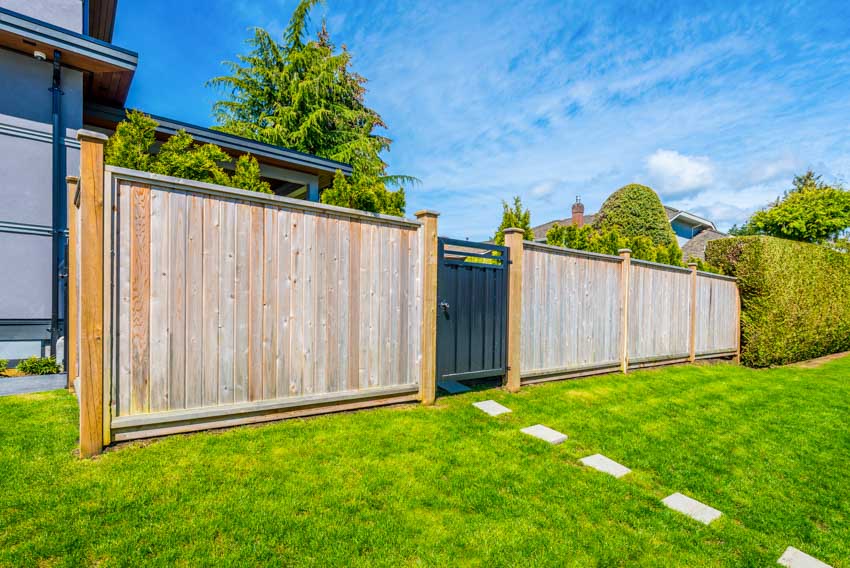
Take note, even though pressure-treated fences are extremely moisture-resistant if they are constantly exposed to water, the moisture can still find its way to penetrate the wood.
Nonetheless, if these types of issues or other problems come up, you may want to follow the maintenance tips listed below to extend the lifespan of your pressure-treated fences.
• Consistently Remove Any Mold: Mold is a mortal enemy when it comes to wood, whether it is treated or not. This fungus grows on the wooden surface of your fences because of excessive moisture that may be caused by continuous rainfall.
When mold grows in places on the fencing panels, it begins to infiltrate deeply into the wood, causing it to deteriorate. Thankfully, mold can be removed from pressure-treated fences using an acidic mixture of white vinegar and water.
• Remove Any Rotting Signs: Around the 15-year mark, you may notice little areas of your fencing that appear to be rotting. Rotting forces your fences to break apart gradually; therefore, you must address it as soon as possible. The easiest technique to keep it from rotting is to punctually cut away spots of mold using a saw or knife.
• Immediately Repair Collapsing Pickets: Once the pickets start to fall off, your enclosure will not be able to function properly. If you find a broken portion of your pressure-treated fence when checking it, you can immediately reinforce it using a hammer and some nails.
• Keep An Eye Out For Any Sharp Edges: This upkeep advice is intended to safeguard your children or pets rather than your fences. Those long and sharp splinters can grow on pressure-treated wooden fences as they age, especially after a decade.
Moreover, depending on how the enclosure was constructed, rusted nails may emerge from connection places. As part of your wooden enclosure maintenance program, you have to remove any of these sharp risks.
• Remove Any Leaves from Your Pressure Treated Fence: Although fallen leaves may appear to be a sign of the autumn season, they can speed the degradation of wooden fences, whether they are treated or not.
Leaf stacks hold moisture when they gather. Once moisture penetrates your fencing material, it expedites the growth of mold, particularly around the posts. Hence, you have to rake those leaves away from the pickets or posts of your fences to eliminate any potential risk.
Best Stain For Pressurized Treated Wood Fences
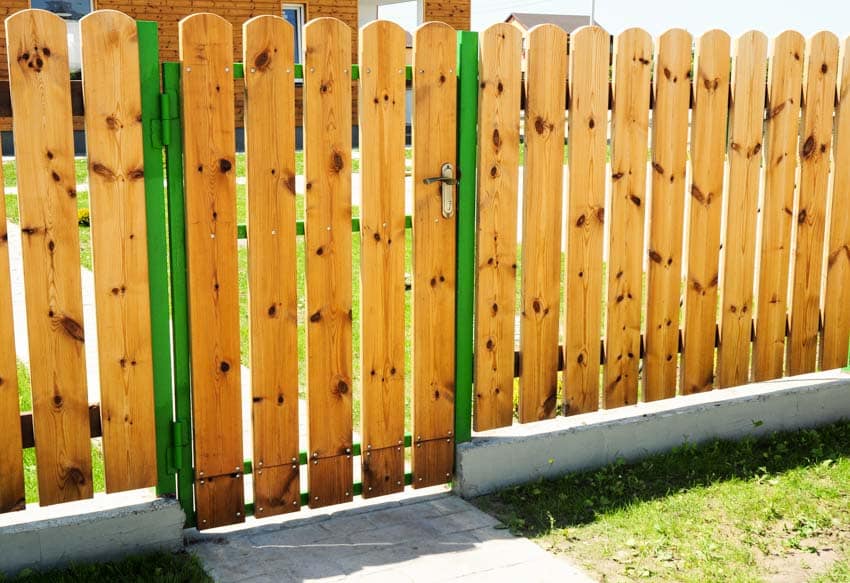
Although it is totally safe to stain pressure treated wood, you should wait until the wood fences are completely dry before applying the oil-based stain. Remember, if you stain pressure treated wood way too early, the stain will not be able to effectively infiltrate the wood and you will not receive the stain’s protective properties.
Staining pressure treated wood adds an extra layer of protection. Oil-based stains provide an additional layer of protection against termites, decay, mildew, and mold. Unstained pressure treated wood can also fracture and splinter after some years, but an oil-based stain can help to prevent this.
Do Green Fences Need Painting?
Generally, a traditional painting technique or varnish is not needed on a pressure treated wood enclosure as the results are usually mediocre, and repainting is frequently necessitated by scraping and sanding.
However, if you want to change the color of your pressure treated fences, then you are free to do so. However, you should keep in mind that it has some crucial restrictions that you should be aware of first.
Because this is not like painting ordinary timber, you must be aware that some extra procedures will be necessary. Here are a few things to keep in mind once you decide to paint your pressure treated fences.
• Ensure that Your Fencing Is Completely Dry: If it is dry enough to touch, you can do the water test by sprinkling some water on the wood’s surface. If the water collects up on the surface, that means the wood has not completely dried yet, and you must wait.
To be certain, you can examine the water content of the wood with a moisture meter. You must wait once your reading falls below 14%.
• Begin by Washing Your Fences: Dirt and grime that has accumulated on the surface can be removed with soapy water as well as a hard brush. They also eliminate chemicals, allowing the primer and paint to adhere correctly. Do not use a pressure washer, as it might damage the quality of your pressure treated wood fences.
• Be Sure to Prime the Surface First Before Painting: Because of its high solid content, primer generates a flat finish required for paint to slide easily. The primer you use must be compatible with the paint you intend to use. For instance, oil-based paint requires a stain-blocking oil-based primer, whereas latex should be matched with a stain-blocking latex or oil-based primer.
• Start Painting: After the primer has dried, you can begin painting your item. Consider painting two coats of the highest quality paint you can purchase. Do not forget to let the paint dry completely between layers. Re-applying paint too early can lead to adhesion issues.
If you are trying to decide the benefits of fence stain vs paint check out this article.
Should I Use Wood That Has Underfone Pressure Treatment for Fence Rails?
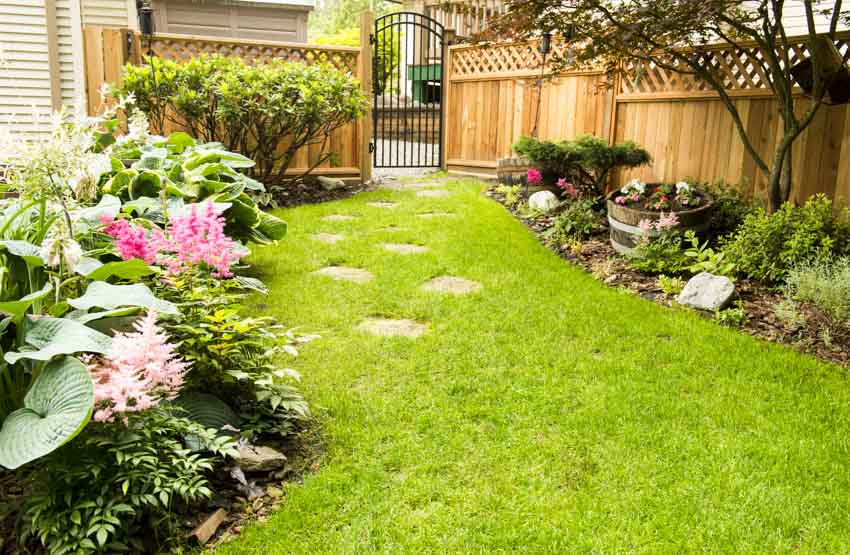
Luckily, all of these issues are addressed by using pressure treated wood for your rails, which preserves the timber from harsh weather conditions. It is also critical to select UV-protected wood to keep its exquisite color.
The industrial procedure of pressure treatment delivers fire retardants or wood preservatives to the rails. It increases their strength, making them more resilient and resistant to pest infestation and adverse weather situations.
Cedar Vs Pressure Technique Wood Fence
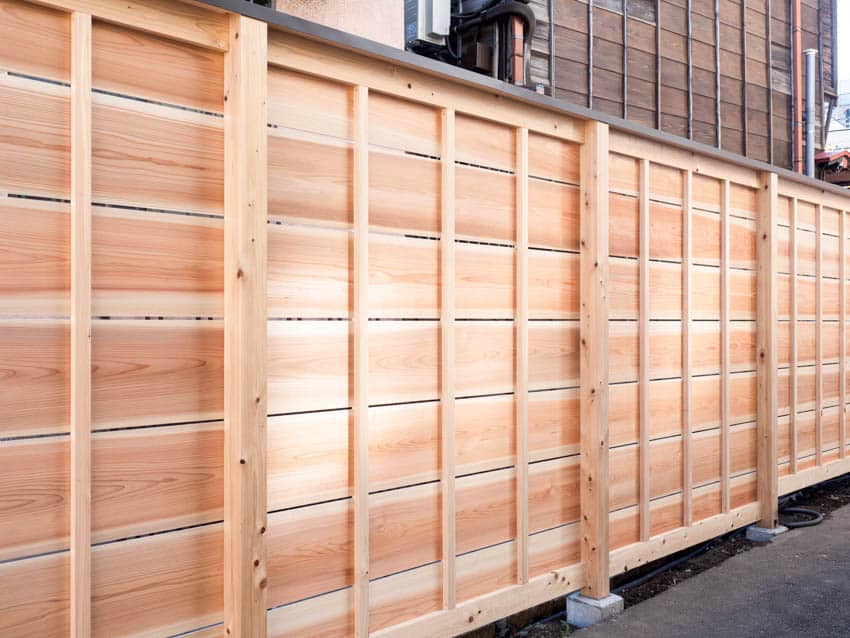
Compared to pressure treated lumber, cedar fences are more resilient by nature. Cedar, on the other hand, is more prone to aesthetic damage, such as scratches and dents. Even though cedar is inherently moisture-resistant, it does not hold up well in continuously moist conditions.
However, pressure treated timber has superior moisture resistance when properly treated and maintained, making it an ideal choice for extremely wet conditions. Cedar is environmentally friendly and sourced in a sustainable manner. In contrast, treated timber includes chemicals that can damage the soil as well as the neighboring environment.
Pressure treated timber is the most cost-effective option for budget-conscious households. Nevertheless, cedar has a more appealing appearance and lasts longer. But still, the final choice will be yours to make as it will depend on your needs and preferences.
See more related content in our article about the best fence design software on this page.

